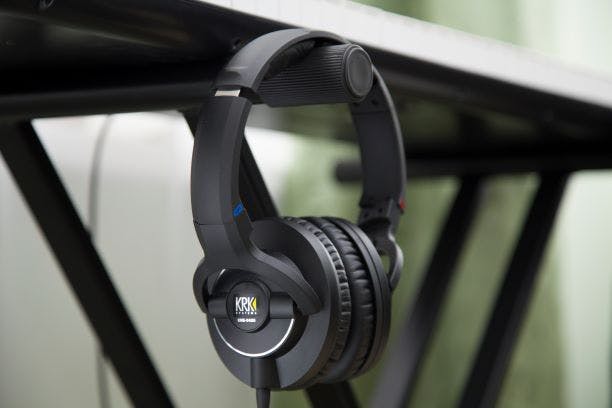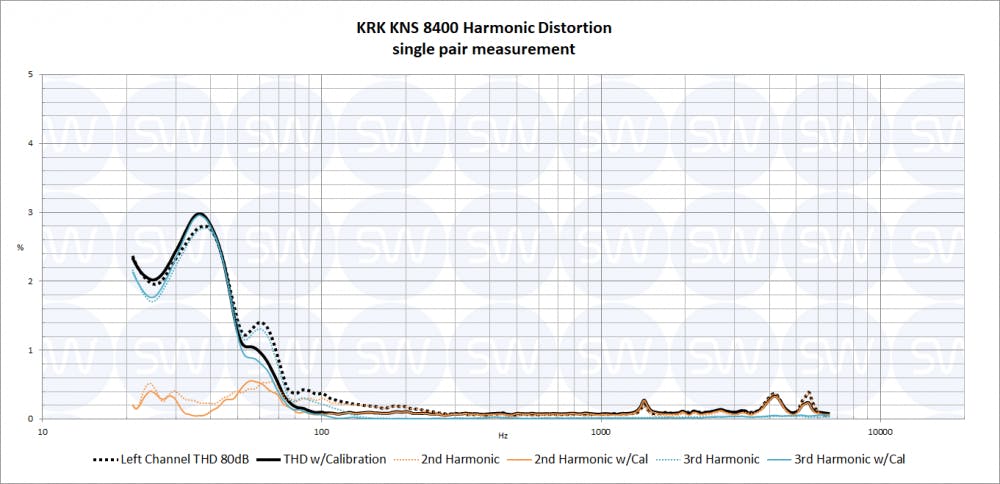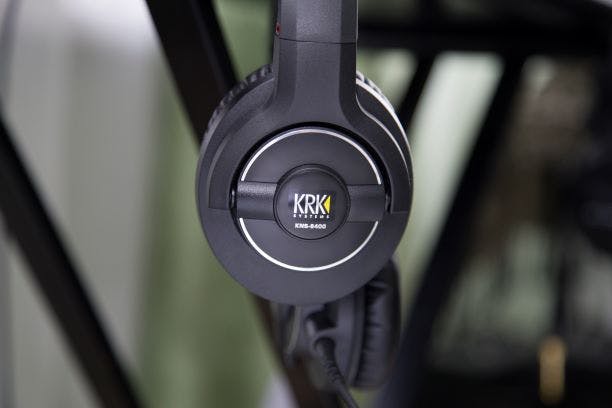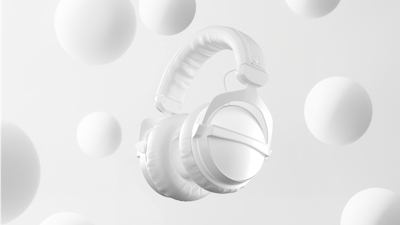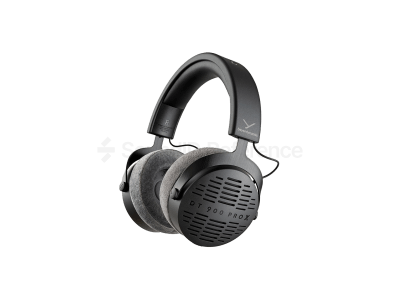You’ve probably seen the yellow coned studio monitors made by KRK. In the affordable studio speaker market, they’ve been one of the top players for quite some time. Their headphones on the other hand don’t seem to be as ubiquitous as their yellow woofers. Is it the inertia of popularity of the more established studio headphone brands that prevents potential buyers from giving KRK a chance? Or maybe KRK fails to perform as well as the competition? Let’s take a look at the KNS 8400, the more expensive of the two models in KRK headphone range.
- The volume control might come in handy for some
Pros list with SoundID Reference calibration
- Flat frequency response makes them fit for mixing
- Quite unique frequency response
The build is almost entirely plastic, apart from the headband adjustment mechanism, which includes steel rails. However, the plastic feels very sturdy and joints don’t make a lot of noise when handled. Overall build quality doesn’t raise immediate concerns for durability. The headband cushions are wrapped in leatherette, as are the memory foam ear pads. Ear cups rotate 90 degrees, so headphones can be folded flat for packing and storing. One feature that sets these KRK’s apart from most other headphones is the separate cable with dedicated volume control that also serves as a cable extension.
KNS 8400’s boost bass and high frequencies like most of the headphones and the mid-range dip is also a common trait. It’s the high-mid range where it gets more interesting. Usually, here you’ll find a cut, but for KNS 8400 the 3 – 5 kHz region gets a noticeable boost of about 3 dB. The high frequencies are elevated by about 5 dB’s, which is relatively conservative. The overall perceived sound coloration these KRK’s apply to the signal is more severe than a quick glance at the graph might suggest. Two main factors that contribute to this are the aforementioned high-mid boost and the elevated bass that extends up to about 300 Hz and is followed up by an abrupt dip at 400 Hz. The spiky highs don’t help either.
On average pair of KNS 8400 channels are close to identical which is quite exceptional for the price. Two out of ten pairs measured had inconsistencies though, in worst cases reaching 4 dB in some frequency bands which drags the score down.
Comfort wasn’t an issue for any of the testers so while KNS8400 are not the most comfortable studio headphones out there, with short breaks they can be worn for hours. Eyeglass wearers also were satisfied with the way KRK’s fit.
KNS 8400 is a quality set of studio headphones that offer high versatility. KNS 8400 isn’t exactly overpriced yet there are other offerings, such as Mackie MC-250 that deliver similar value for less money.
THD almost exclusively consists of 3rd harmonic distortion which in other cases may mean nasty audible artifacts, however, THD reaches a somewhat meaningful figure only at about 35 Hz that translates to distortion at about 105 Hz which although is well into the audible spectrum, doesn’t produce perceivable artifacts.
How accurate and consistent is the correction effect among different listeners?Adaptiveness is not the best. Listeners with smaller heads might perceive a couple of dB’s more bass, and/or varied response of 2 – 5 kHz range depending on headphone position on the head. For listeners with medium to large head sizes, the perceived frequency response is very similar though.
How much do they differ pair to pair in terms of frequency response?Nine out of the ten measured pairs fall in between +/- 3dB difference with one outlier having about 5 dB less bass (20 – 200 Hz) than average.
Rating
Conclusion
If the cable with the volume remote is something you find useful, definitely try out KNS 8400. Other than that these KRK’s are good, there isn’t much bad to say about them, but they don’t really excel in anything either. They’re fairly comfortable for the class, but Beyers beat them in this department. Paired with calibration they’re a good monitoring tool but at the price KRK is asking it’s not the best deal.
Final Rating
Calibration Enabled
Calibration

